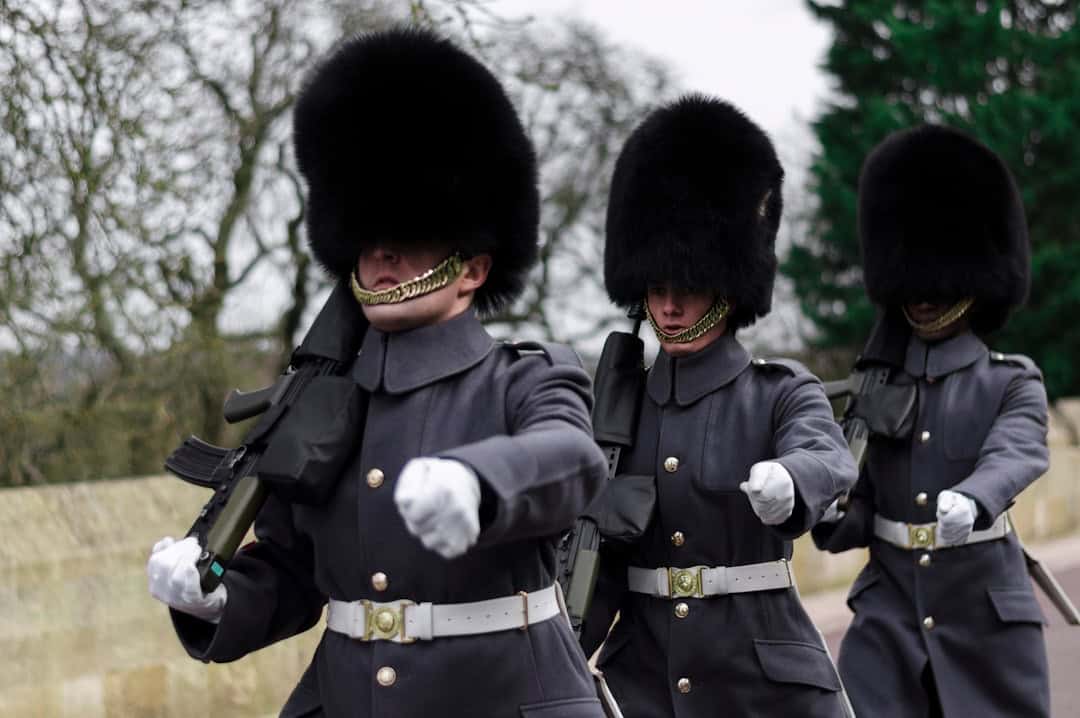Zero day vulnerabilities are security flaws in software or hardware that are unknown to the vendor or developer. They are called “zero day” because attackers exploit them on the same day they are discovered, leaving no time for the developer to create a patch. These vulnerabilities can exist in various systems, including operating systems, web browsers, applications, and hardware components like routers and IoT devices.
Cyber attackers exploit zero day vulnerabilities to gain unauthorized access to systems, steal sensitive information, or disrupt critical infrastructure. Exploitation methods include phishing attacks, drive-by downloads, and malicious email attachments. Once exploited, zero day vulnerabilities can lead to severe security breaches and financial losses for organizations and individuals.
The danger of zero day vulnerabilities lies in their unknown status to the public and vendors, meaning no patches or fixes are available to protect against them. This makes them highly valuable to cybercriminals and state-sponsored hackers for launching targeted attacks and espionage campaigns. Understanding zero day vulnerabilities is essential for organizations and individuals to implement proactive measures to protect their systems and data from potential exploitation.
Key Takeaways
- Zero day vulnerabilities are unknown security flaws that are exploited by attackers before a patch is available.
- Zero day patching is crucial for protecting systems and data from potential cyber attacks.
- Ignoring zero day vulnerabilities can lead to data breaches, financial losses, and damage to an organization’s reputation.
- Best practices for zero day patch management include regular monitoring, timely patching, and prioritizing critical vulnerabilities.
- Strategies for identifying and addressing zero day vulnerabilities include threat intelligence, vulnerability scanning, and proactive security measures.
- Zero day patching plays a critical role in strengthening cybersecurity defenses and mitigating the impact of potential attacks.
- Future trends in zero day patching technology may include automation, machine learning, and advanced threat detection capabilities.
The Importance of Zero Day Patching
Zero day patching is the process of developing and deploying security updates to fix zero day vulnerabilities in software or hardware. It is crucial for organizations and individuals to prioritize zero day patching to mitigate the risk of exploitation and protect their systems from potential security breaches. Zero day patching helps to close the security gaps that cyber attackers can exploit to gain unauthorized access, steal sensitive information, or disrupt critical operations.
By promptly applying zero day patches, organizations can reduce their exposure to potential cyber threats and minimize the impact of security breaches. Zero day patching also demonstrates a commitment to proactive cybersecurity measures, which can enhance an organization’s reputation and trustworthiness among its customers and partners. Additionally, zero day patching helps to comply with industry regulations and standards that require organizations to maintain secure and resilient IT infrastructures.
The importance of zero day patching cannot be overstated, as it plays a critical role in safeguarding systems and data from evolving cyber threats. Organizations should establish robust patch management processes and stay informed about the latest security updates from software and hardware vendors to ensure timely deployment of zero day patches.
Risks and Consequences of Ignoring Zero Day Vulnerabilities

Ignoring zero day vulnerabilities can have severe risks and consequences for organizations and individuals. When zero day vulnerabilities are left unpatched, cyber attackers can exploit them to launch targeted attacks, steal sensitive information, disrupt operations, and cause financial losses. The longer a zero day vulnerability remains unaddressed, the greater the risk of exploitation and the potential impact of a security breach.
By ignoring zero day vulnerabilities, organizations expose themselves to regulatory non-compliance, legal liabilities, reputational damage, and loss of customer trust. Security breaches resulting from unpatched zero day vulnerabilities can lead to costly incident response efforts, forensic investigations, and remediation activities. Moreover, organizations may face lawsuits, fines, and penalties for failing to protect sensitive data and maintain secure IT infrastructures.
Individuals are also at risk when zero day vulnerabilities are ignored, as cyber attackers can target personal devices and steal sensitive information for identity theft, financial fraud, or other malicious purposes. Ignoring zero day vulnerabilities on personal devices can lead to privacy violations, financial losses, and emotional distress for the affected individuals.
Best Practices for Zero Day Patch Management
| Best Practices for Zero Day Patch Management |
|---|
| Regularly monitor vendor websites and security advisories for zero day vulnerabilities |
| Implement automated patch management tools to deploy patches quickly |
| Establish a dedicated team to prioritize and test patches before deployment |
| Segment the network to isolate vulnerable systems and limit the impact of zero day exploits |
| Conduct regular vulnerability assessments and penetration testing to identify potential zero day vulnerabilities |
Effective zero day patch management requires organizations to adopt best practices for identifying, testing, deploying, and monitoring security updates. Some best practices for zero day patch management include: 1. Establishing a Patch Management Policy: Organizations should develop a formal patch management policy that outlines the process for identifying, testing, deploying, and monitoring security updates, including zero day patches.
The policy should define roles and responsibilities for patch management activities and establish clear guidelines for prioritizing patches based on risk assessment. 2. Automating Patch Deployment: Implementing automated patch deployment tools can streamline the process of distributing security updates across an organization’s IT infrastructure.
Automation helps to ensure timely deployment of zero day patches and reduces the risk of human error in patch management activities. 3. Conducting Vulnerability Scanning: Regular vulnerability scanning helps organizations identify potential zero day vulnerabilities in their systems and prioritize patching efforts based on the severity of the risks.
Vulnerability scanning tools can provide insights into the security posture of an organization’s IT environment and help prioritize remediation activities. 4. Testing Patches in a Controlled Environment: Before deploying zero day patches in production environments, organizations should conduct thorough testing in a controlled environment to assess the compatibility and impact of the patches on existing systems and applications.
Testing helps to minimize the risk of unintended consequences from patch deployment. 5. Monitoring Patch Compliance: Continuous monitoring of patch compliance is essential to ensure that zero day patches are successfully deployed across an organization’s IT infrastructure.
Monitoring tools can help identify any gaps in patch deployment and remediate issues promptly. By following these best practices for zero day patch management, organizations can enhance their cybersecurity posture and reduce the risk of exploitation from unknown vulnerabilities.
Strategies for Identifying and Addressing Zero Day Vulnerabilities
Identifying and addressing zero day vulnerabilities requires organizations to adopt proactive strategies for threat intelligence, vulnerability management, and incident response. Some strategies for identifying and addressing zero day vulnerabilities include: 1. Threat Intelligence Gathering: Organizations should invest in threat intelligence gathering capabilities to stay informed about emerging cyber threats, including zero day vulnerabilities.
Threat intelligence sources can provide valuable insights into potential attack vectors, exploit techniques, and targeted industries or sectors. 2. Collaborating with Security Researchers: Engaging with security researchers and participating in bug bounty programs can help organizations identify and address zero day vulnerabilities in their software or hardware products.
Collaboration with external experts can provide additional perspectives on potential security risks and help prioritize patch development efforts. 3. Implementing Intrusion Detection Systems: Deploying intrusion detection systems (IDS) can help organizations detect potential exploitation attempts targeting zero day vulnerabilities in their IT infrastructure.
IDS can provide real-time alerts about suspicious network activities and help initiate incident response actions promptly. 4. Establishing Incident Response Plans: Developing incident response plans that include specific procedures for addressing zero day vulnerabilities is essential for minimizing the impact of security breaches.
Incident response plans should outline communication protocols, containment strategies, forensic investigation processes, and recovery measures. 5. Participating in Information Sharing Communities: Joining information sharing communities such as Information Sharing and Analysis Centers (ISACs) or industry-specific forums can provide organizations with valuable insights into zero day vulnerabilities affecting their sector.
Information sharing communities facilitate collaboration among peers and enable proactive threat mitigation efforts. By implementing these strategies for identifying and addressing zero day vulnerabilities, organizations can strengthen their cybersecurity defenses and reduce the likelihood of successful exploitation by cyber attackers.
The Role of Zero Day Patching in Cybersecurity

Zero day patching plays a crucial role in cybersecurity by helping organizations mitigate the risk of exploitation from unknown vulnerabilities and protect their systems from potential security breaches. Zero day patches are essential for closing security gaps that cyber attackers can leverage to gain unauthorized access, steal sensitive information, or disrupt critical operations. In addition to addressing zero day vulnerabilities, zero day patching demonstrates an organization’s commitment to proactive cybersecurity measures and resilience against evolving cyber threats.
By promptly applying zero day patches, organizations can reduce their exposure to potential attacks and enhance their overall security posture. Furthermore, zero day patching contributes to building trust among customers, partners, and stakeholders by demonstrating a proactive approach to safeguarding sensitive data and maintaining secure IT infrastructures. Organizations that prioritize zero day patching are better positioned to comply with industry regulations and standards that require continuous protection against emerging cyber threats.
Overall, the role of zero day patching in cybersecurity is essential for organizations to stay ahead of potential security risks and maintain a resilient defense against evolving cyber threats.
Future Trends in Zero Day Patching Technology
The future of zero day patching technology is expected to evolve with advancements in artificial intelligence (AI), machine learning (ML), automation, and threat intelligence capabilities. Some future trends in zero day patching technology include: 1. AI-Driven Threat Detection: AI-powered threat detection solutions will play a significant role in identifying potential zero day vulnerabilities by analyzing patterns in network traffic, user behavior, and system activities.
AI-driven threat detection can help organizations proactively identify emerging cyber threats before they are exploited by cyber attackers. 2. Automated Patch Generation: Automation technologies will enable vendors to develop and deploy zero day patches more efficiently by automating the process of code analysis, vulnerability identification, patch generation, and testing.
Automated patch generation tools can accelerate the time-to-patch deployment and reduce the window of exposure to potential exploitation. 3. Predictive Patching Analytics: ML algorithms will enable organizations to predict potential zero day vulnerabilities based on historical data, threat intelligence feeds, and system telemetry.
Predictive patching analytics can help prioritize patch management efforts and allocate resources effectively to address high-risk vulnerabilities. 4. Threat Intelligence Integration: Integration of threat intelligence feeds into patch management solutions will enable organizations to stay informed about emerging zero day vulnerabilities affecting their software or hardware products.
Threat intelligence integration can provide real-time insights into potential attack vectors and exploit techniques used by cyber attackers. 5. Continuous Monitoring and Remediation: Continuous monitoring solutions will enable organizations to detect potential exploitation attempts targeting zero day vulnerabilities in real time and initiate remediation actions promptly.
Continuous monitoring capabilities will help minimize the impact of security breaches resulting from unpatched vulnerabilities. As these future trends in zero day patching technology continue to evolve, organizations will have access to advanced tools and capabilities for addressing unknown vulnerabilities proactively and maintaining secure IT infrastructures. In conclusion, understanding zero day vulnerabilities is crucial for organizations and individuals to take proactive measures to protect their systems from potential exploitation by cyber attackers.
The importance of zero day patching cannot be overstated, as it plays a critical role in safeguarding systems and data from evolving cyber threats. Ignoring zero day vulnerabilities can have severe risks and consequences for organizations and individuals, leading to regulatory non-compliance, legal liabilities, reputational damage, financial losses, privacy violations, and emotional distress. To effectively manage zero day patches, organizations should adopt best practices for identifying, testing, deploying, and monitoring security updates while implementing proactive strategies for threat intelligence gathering, vulnerability management, incident response planning, intrusion detection systems deployment, collaboration with security researchers, participation in information sharing communities, automation of patch deployment processes, continuous monitoring of patch compliance, establishment of incident response plans with specific procedures for addressing zero-day vulnerabilities.
The role of zero-day patching in cybersecurity is essential for organizations to stay ahead of potential security risks while maintaining a resilient defense against evolving cyber threats. The future trends in zero-day patching technology are expected to evolve with advancements in artificial intelligence (AI), machine learning (ML), automation technologies enabling vendors to develop & deploy patches more efficiently by automating code analysis & vulnerability identification & predictive patching analytics enabling organizations predict potential zero-day vulnerabilities based on historical data & threat intelligence feeds & continuous monitoring solutions enabling organizations detect potential exploitation attempts targeting zero-day vulnerabilities & initiate remediation actions promptly while integration of threat intelligence feeds into patch management solutions will enable organizations stay informed about emerging zero-day vulnerabilities affecting their software or hardware products & provide real-time insights into potential attack vectors & exploit techniques used by cyber attackers.
FAQs
What is a zero day patch?
A zero day patch is a software update released by a vendor to fix a security vulnerability that is being actively exploited by attackers. The term “zero day” refers to the fact that the vulnerability is discovered and exploited by attackers before the vendor is aware of it.
Why are zero day patches important?
Zero day patches are important because they help to protect users from being exploited by attackers who are taking advantage of a newly discovered vulnerability. Without a zero day patch, users are at risk of having their systems compromised.
How are zero day patches different from regular patches?
Zero day patches are different from regular patches because they are released in response to an actively exploited security vulnerability. Regular patches are released to fix known issues or improve the functionality of the software.
How can users protect themselves before a zero day patch is released?
Users can protect themselves before a zero day patch is released by staying informed about security vulnerabilities and best practices for securing their systems. They can also implement security measures such as using firewalls, antivirus software, and keeping their software up to date.
How quickly are zero day patches typically released?
The timeline for releasing a zero day patch can vary depending on the severity of the vulnerability and the vendor’s ability to develop and test a fix. In some cases, vendors may release a zero day patch within hours or days of discovering the vulnerability, while in other cases it may take longer.











Leave a Reply